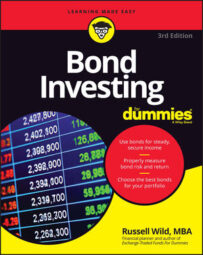The reason for bonds’ staid status is not only that they provide steady and predictable streams of income, but also that as a bondholder you have first dibs on the issuer’s money. A corporation is legally bound to pay you your interest before it doles out any dividends to people who own company stock.
If a company starts to go through hard times, any proceeds from the business or (in the case of an actual bankruptcy) from the sale of assets go to you before they go to shareholders.
However, bonds offer no ironclad guarantees. First dibs on the money aside, bonds are not FDIC-insured savings accounts. They are not without some risk. For that matter, even an FDIC-insured savings account — even stuffing your money under the proverbial mattress! — also carries some risk.
Interest rates go up, and interest rates go down. And whenever they do, bond prices move, almost in synch, in the opposite direction. Why? If you’re holding a bond that pays 5 percent, and interest rates move up so that most new bonds are paying 7 percent, your old bond becomes about as desirable to hold as a pet scorpion.
Any rational buyer of bonds would, all things being equal, choose a new bond paying 7 percent rather than your relic, still paying only 5 percent. Should you try to sell the bond, unless you can find a real sucker, the price you are likely to get will be deeply discounted.
The longer off the maturity of the bond, the more its price will drop with rising interest rates. Thus long-term bonds tend to be the most volatile of all bonds. Think it through: If you have a bond paying 5 percent that matures in a year, and the prevailing interest rate moves up to 7 percent, you’re looking at relatively inferior coupon payments for the next 12 months.
If you’re holding a 5 percent bond that matures in ten years, you’re looking at potentially ten years of inferior coupon payments.
No one wants to buy a bond offering ten years of inferior coupon payments unless she can get that bond for a steal.
That’s why if you try to sell a bond after a period of rising interest rates, you take a loss. If you hold the bond to maturity, you can avoid that loss, but you pay an opportunity cost because your money is tied up earning less than the prevailing rate of interest. Either way, you lose.
Of course, interest rate risk has its flip side: If interest rates fall, your existing bonds, paying the older, higher interest rates, suddenly start looking awfully good to potential buyers. They aren’t pet scorpions anymore — more like Cocker Spaniel puppies. If you decide to sell, you’ll get a handsome price.This “flip side” to interest rate risk is precisely what has caused the most peculiar situation in the past three decades, where the longest-term Treasury bonds (with 30-year maturities) have actually done as well as the S&P 500 in total returns. The yield on these babies has dipped from over 14 percent in the early 1980s to just a little over 3 percent today.
Hence, those old bonds, which are now maturing, have turned to gold. Will this happen again in the next 30 years? Not unless long-term Treasuries in the year 2042 are being issued with a negative 8 percent interest rate. Of course, that isn’t going to happen. More likely, interest rates are going to climb back to historical norms.
Interest rate risk has perhaps never been greater than it is today. You would be foolish to put your money into 30-year Treasuries and assume that you are going to get 11.5 percent a year annual return, as some very lucky investors have done over the last 30 years. Chances are, well . . . anything can happen over 30 years, but keep your expectations modest, please.

